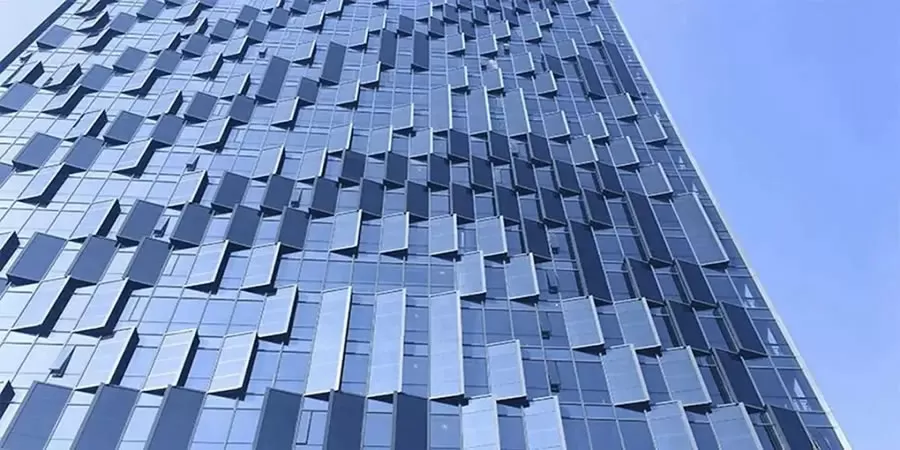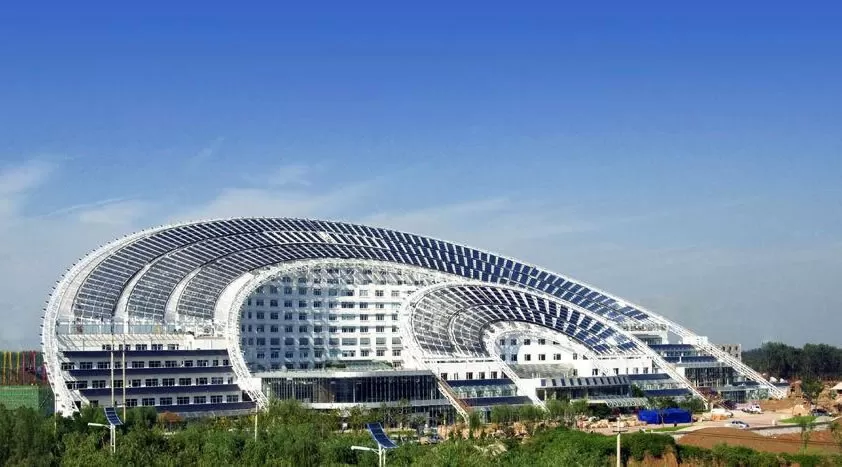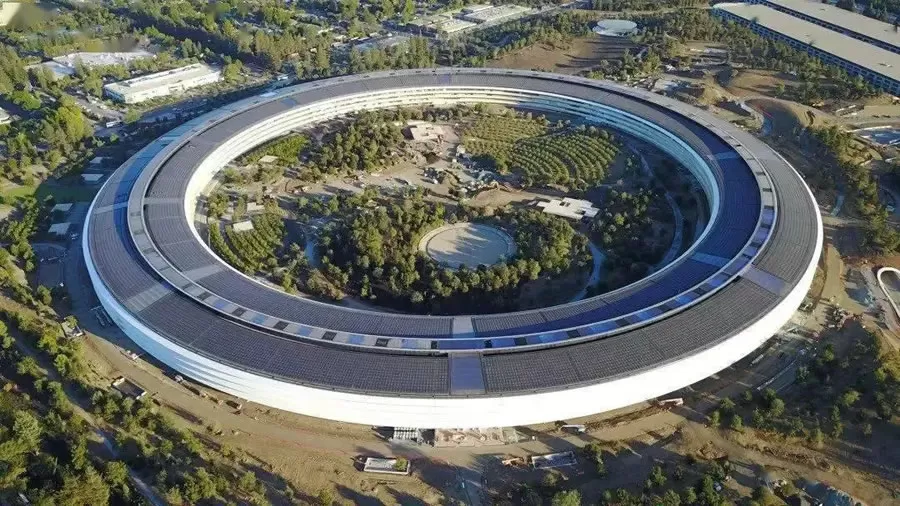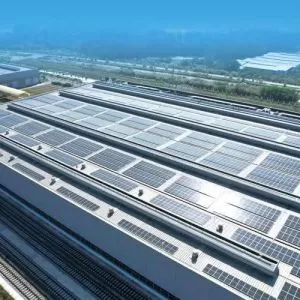
BIPV (Building Integrated Photovoltaic) technology has become a revolutionary technology in the field of architecture with the global emphasis on sustainable development and the growing demand for green buildings.BIPV refers to the integration of solar photovoltaic modules directly into the facade, roof or even windows of a building, which not only realizes the aesthetic design of the building, but also makes effective use of solar power generation, and becomes a kind of environmentally friendly and energy-saving architectural solution. . In recent years, more and more global building projects have begun to adopt BIPV technology, creating some amazing and innovative buildings that not only realize energy saving and environmental protection, but also bring significant economic benefits to enterprises.
1. Global BIPV Creative Building Projects Inventory
Solar-powered Bicycle Path in Amsterdam, the Netherlands

Solar-powered bike path in Amsterdam, Netherlands
As the world's first photovoltaic pavement integration project, this bicycle path uses high-strength glass covered with photovoltaic cells, which can withstand the pressure of vehicular traffic, but also provide power for the surrounding street lights and traffic signal systems. The project generates 73kWh/m² per year, demonstrating the potential of BIPV in public infrastructure.
Tesla Solar Roof Villa Community, USA
Tesla's Solar Roof Tiles seamlessly combine conventional shingles with photovoltaic modules, combining high light transmission and power generation efficiency. A high-end community in California has achieved 100% self-sufficiency in household electricity through full roof coverage and increased property value by more than 30% with its aesthetic design.
Micro Row Tower, Riyutan, China

China Riyutan Microplatoon Building
The Micro Row Building is the world's largest single BIPV building, with 12,000 pieces of colored photovoltaic glass covering the facade, generating over 300,000 kWh of electricity annually. The building adopts intelligent temperature control and energy storage system, with a comprehensive energy saving rate of 88%, making it a model of “zero carbon building”.
Photovoltaic Curtain Wall of Bordeaux Wine Culture Center, France
The building façade simulates the rhythm of grape vines with wave-shaped photovoltaic glass and adjustable light transmittance, which not only meets the lighting requirements of the exhibition hall, but also realizes an annual power generation of 450,000 kWh. Its modularized design has become a benchmark for the combination of cultural architecture and new energy in Europe.
Commercial Building in Munich, Germany
A commercial building in Munich integrates transparent photovoltaic glass on its façade, which not only has high light transmittance, but also effectively converts solar energy into electricity for use inside the building. The success of this project demonstrates how BIPV technology breaks through the limitations of traditional architectural design, not only solving the balance between aesthetics and functionality, but also greatly reducing the building's energy consumption, which is a perfect fusion of architecture and solar power generation.
Bosco Verticale (Milan, Italy) Photovoltaic Shading System
Outside the famous “Vertical Forest” apartments, designers installed customized photovoltaic shading shutters, which not only provide light regulation for the greenery, but also deliver clean electricity to the building, increasing the building's comprehensive carbon emission reduction to 65%.
Solar Park Tower, Dubai
As the first all-BIPV skyscraper in the Middle East, Solar Park Tower adopts a design combining curved photovoltaic glass curtain wall and wind power generation, and its annual power generation meets 80% of the whole building's energy consumption demand, subverting the image of traditional high-energy-consuming glass buildings.
Photovoltaic sunshade of CapitaSpring Building in Singapore
The sky garden on the top of the building is covered with wave-shaped translucent photovoltaic panels, which provide power for the elevator and lighting system while shading the sun and cooling the building, saving more than $500,000 in electricity costs annually, and was awarded the “Best BIPV Practice in Tropical Climate Zones”.
2、The core advantages and characteristics of BIPV
The application of BIPV technology is not only limited to the exterior design of buildings, but more importantly, it can provide a sustainable, environmentally friendly and efficient energy solution for buildings. The following are some of the significant advantages of BIPV technology:
Energy self-sufficiency
BIPV systems allow buildings to generate electricity directly from solar energy, reducing reliance on external power supplies and achieving energy self-sufficiency. Especially in areas with abundant light, BIPV can significantly reduce the energy costs of buildings.
Aesthetics and Functionality
BIPV modules seamlessly integrate with building facades, roofs, windows, and other structures, meeting the aesthetic needs of the building while fully utilizing solar power generation.BIPV technology breaks away from the monolithic appearance of traditional photovoltaic panels and makes them a part of the architectural design.
Environmentally Friendly, Reduced Carbon Emissions
BIPV technology utilizes solar energy, a clean energy source, to reduce carbon emissions from buildings. By integrating photovoltaic systems, buildings are not only self-sufficient in energy, but also able to provide green energy to the surrounding environment, contributing to the construction of low-carbon cities.
Increasing the value of buildings
More and more consumers and businesses are paying attention to the green attributes of buildings, and buildings with BIPV technology usually have higher market competitiveness due to their energy-saving and environmentally friendly features. For real estate developers, BIPV buildings not only enhance the value of the building, but also increase the attractiveness of the project.
3. Impact of BIPV on Enterprises
Construction enterprises
Through BIPV technology to create “green landmarks”, to seize the market of low-carbon upgrading of high-end commercial real estate and industrial parks.
Energy Enterprises
Entering the distributed energy track with the “building as power station” model and building a user-side microgrid ecosystem.
Technology Company
Develop new BIPV materials such as lightweight, high light transmission and intelligent dimming to promote the iteration of industry technology.
Case Insight
Apple's California headquarters adopts a full-coverage BIPV design, saving $20 million in electricity costs annually while strengthening the brand's environmentally friendly image; China's LONGi, Hanergy and other companies have opened up a dual-profit channel of building materials sales and energy services through BIPV solutions.

Apple's new HQ building built with BIPV
4、Future Prospect of BIPV
With the countries “carbon neutral” policy, such as the EU “Building Energy Efficiency Directive” requires all new public buildings to achieve zero carbon emissions in 2030, BIPV has been from the “demonstration project” towards large-scale application. Whether it is industrial plants, commercial complexes, or rural farms, the deep integration of buildings and photovoltaic is opening up a zero-carbon era in which “every wall can generate electricity”.
Conclusion
BIPV technology, as an innovative solution for combining buildings and solar energy, is gradually changing the face of buildings around the world. From the Netherlands to the United States to China, more and more BIPV projects are demonstrating the huge potential and application prospects of this technology. For enterprises, adopting BIPV technology is not only a fulfillment of environmental responsibility, but also an important means to enhance competitiveness and reduce costs. In the future, with the continuous progress of technology and policy support, BIPV will become an important trend in the construction industry, promoting the pace of green building and sustainable development.
BIPV is not only a technological innovation, but also a revolution in architectural aesthetics and business model disruption. Whether it's a company pursuing sustainable development or an architect eager to create differentiated competitiveness, embracing BIPV means grabbing a head start in the wave of green economy.
Contact us today to get the world's leading BIPV solutions and turn your building into a “power artwork” in the city!









One step to find us,we will respond within 24 hours.
More Contact Details
008613738639386
[email protected]